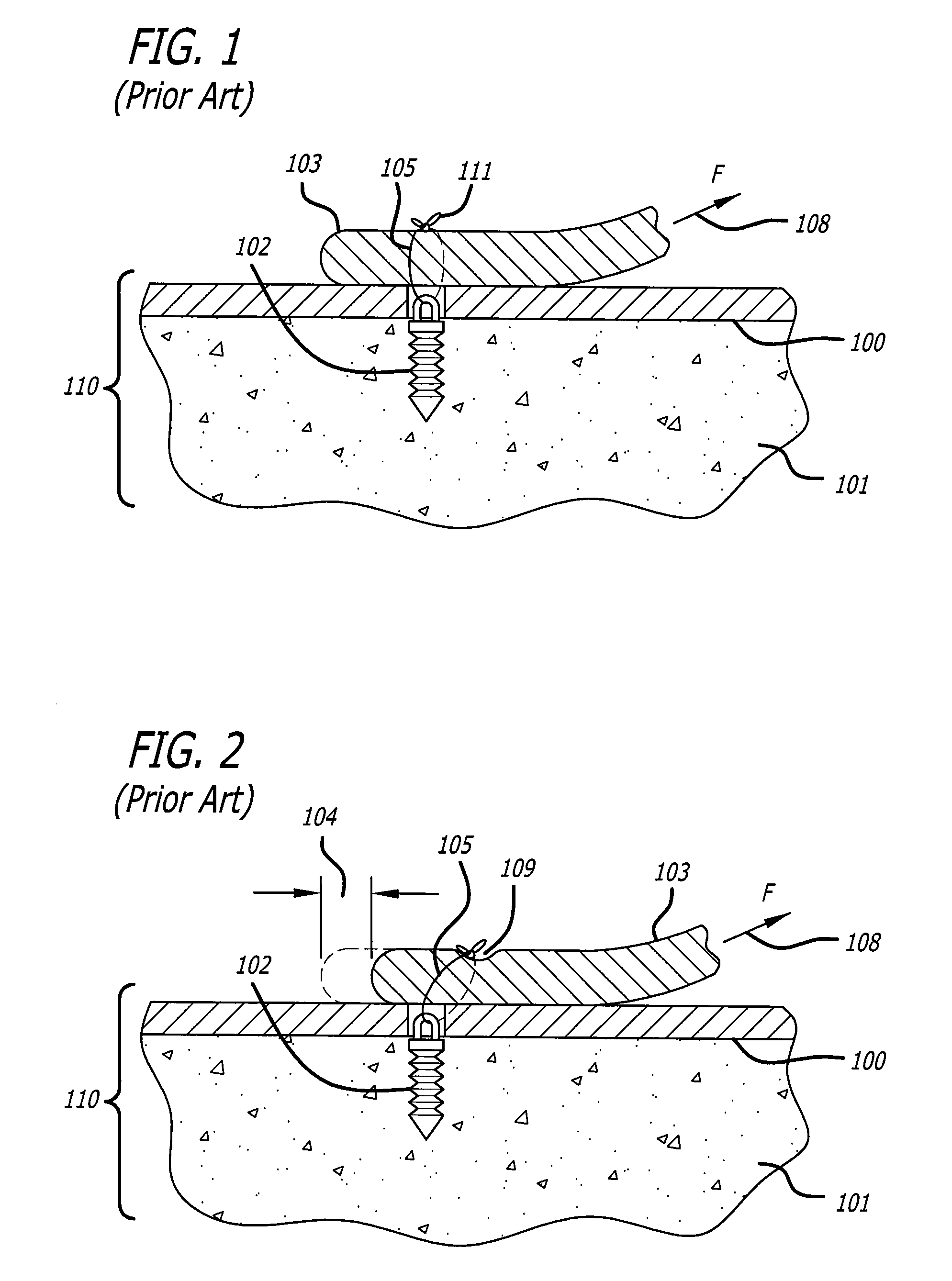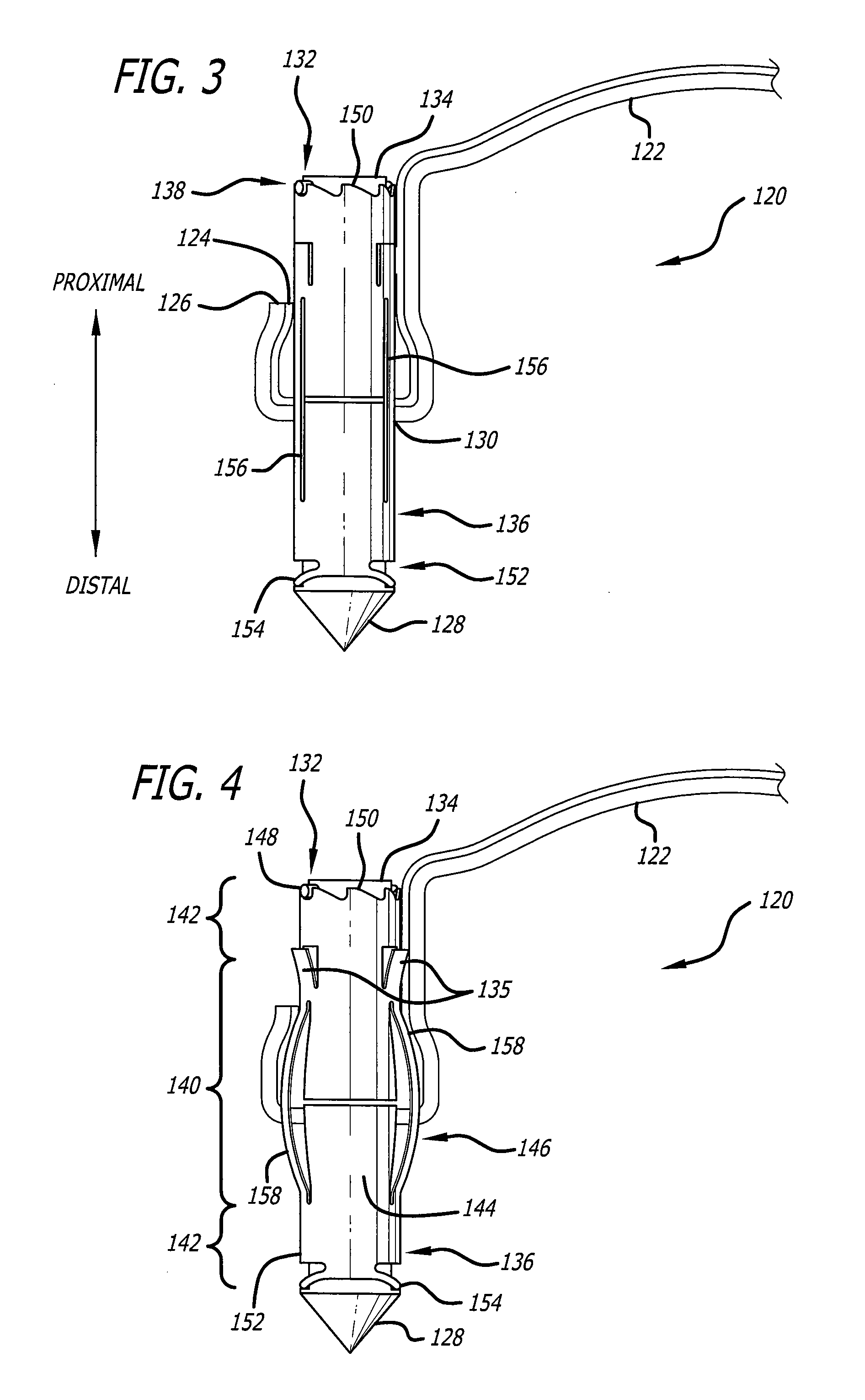Insertion tool for knotless suture anchor for soft tissue repair and method of use
a technology of soft tissue repair and insertion tool, which is applied in the field of medical devices and procedures, can solve the problems of pain and loss of function, high failure rate of surgical rotator cuff repair, and many of these techniques are relatively time-consuming
- Summary
- Abstract
- Description
- Claims
- Application Information
AI Technical Summary
Benefits of technology
Problems solved by technology
Method used
Image
Examples
Embodiment Construction
[0073]FIGS. 24-30D relate to the insertion tool of the present invention, however, the tool can be used with numerous embodiments of a knotless suture anchor which are disclosed and described in FIGS. 3-23. Thus, a description of the various anchors in FIGS. 3-23 precedes the description of the insertion tool of the invention.
[0074]Referring now in more detail to the exemplary drawings for purposes of illustrating embodiments, wherein like reference numerals designate corresponding or like elements among the several views, FIG. 3 shows an assembled knotless suture anchor 120 in accordance with aspects of the invention. The anchor has received an unknotted suture thread 122 and the untied ends 124 and 126 of the thread are shown at the left of the anchor. The anchor has a pointed tip 128 for facilitating penetration of the anchor into the bone with impaction, an aperture 130 for receiving the suture, and a ratcheting mechanism 132 located at the proximal end 138 of the anchor, in thi...
PUM
 Login to View More
Login to View More Abstract
Description
Claims
Application Information
 Login to View More
Login to View More - R&D
- Intellectual Property
- Life Sciences
- Materials
- Tech Scout
- Unparalleled Data Quality
- Higher Quality Content
- 60% Fewer Hallucinations
Browse by: Latest US Patents, China's latest patents, Technical Efficacy Thesaurus, Application Domain, Technology Topic, Popular Technical Reports.
© 2025 PatSnap. All rights reserved.Legal|Privacy policy|Modern Slavery Act Transparency Statement|Sitemap|About US| Contact US: help@patsnap.com



